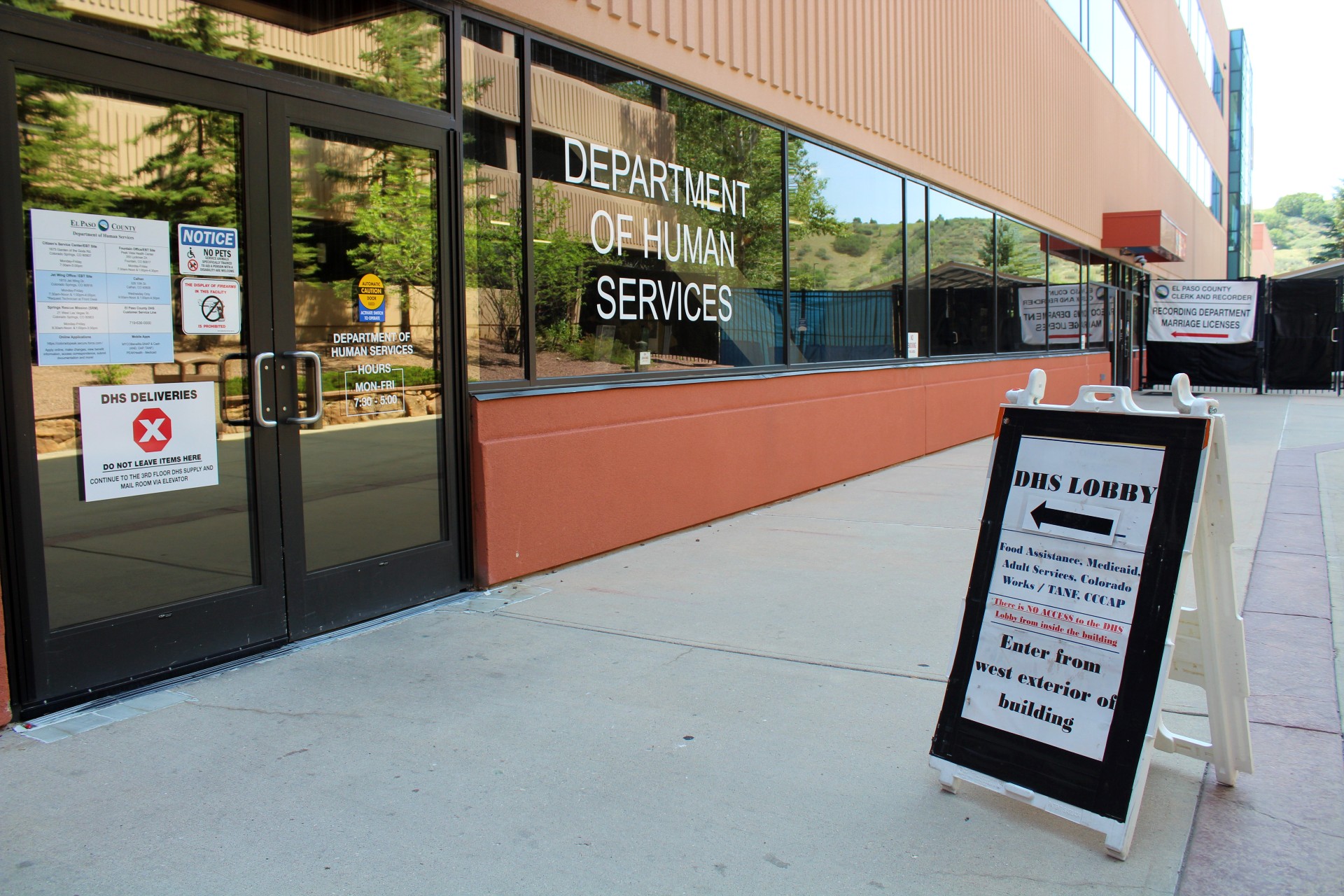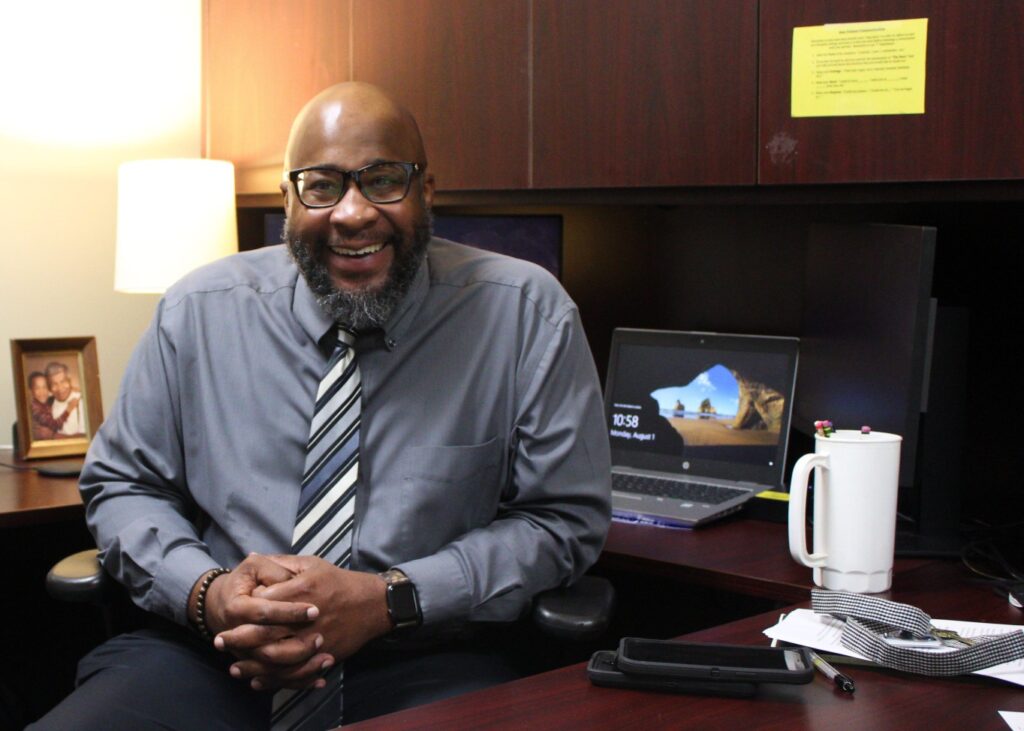
Former social workers in El Paso County say kids are slipping through the cracks. A major part of the problem, they say, is turnover within the Department of Human Services. And those who remain suffer through massive workloads.
When Brittany Williams worked for El Paso County's Children, Youth & Family Services, she said she had as many as 52 cases at one time.
Child welfare advocates say that in order to be effective, social workers serving children should have around 12 cases.

Williams said she thought El Paso County was a place where she could make a difference. She quit in July of 2021 as a direct result of her caseload.
"Sometimes I think maybe it's a broken system because we don't have good research, but we have research and we're doing the opposite of what the research says that we should be doing," she said, referring to her high caseload. "There are other states who are doing it better than we are and we're not looking at them. We're just turning a blind eye."
Williams is among the more than 400 social workers who have resigned from El Paso County DHS over the past six years.
Another former employee said she's still working through the trauma from her time at DHS. She quit this past summer and we're not using her name in order to protect her current job.
"I kind of felt like day to day was what fire needed to be put out first," she said."I had to look and think which kids could make it another day or two and which one couldn't."
Turnover has been a persistent problem at the DHS office, but last year it accelerated. 50 percent more people across the organization left than usual, according to data provided to KRCC. This, according to data from the state and the county, as El Paso County deals with one of the state's highest call volumes to it's abuse and neglect hotline. The agency has also come under fire after two children recently died from fentanyl overdoses in separate incidents. The families of both had past involvement with DHS.
What's being done to keep people from leaving?
Jason Lester, deputy director of children and family services at El Paso County DHS, said recent job openings have come from people moving away or finding a similar position elsewhere.

"Truthfully we're not scaring anyone out of here," Lester said. "We're really wanting to get people the support that they need so they can stay. And we want people to stay as long as they can."
That support has come in the form of a solution box for submitting ideas for the department. Leadership also sends out encouraging emails every week. Lester said there's also more flexibility in remote working. This spring, staff was invited to participate in a "wellness week" that included yoga, therapy dogs and food trucks in the parking lot.
Lester readily acknowledged the challenges within his department, but he said the national guideline of 12 cases per worker is a tough standard to meet.
"12 cases and assessments would be absolutely amazing," he said. "It would be like driving 75 [mph] everywhere you go."
To help, starting in July, Lester said workers with a higher number of cases got an additional stipend.
For some, though, those efforts miss the mark.
A current DHS case worker who has asked to remain anonymous for fear of retribution said people just can't do their work.
"[We] simply have to tell families there's no availability," they said. "They may literally be on a waitlist to get their case worker or their visitation started. I've seen that happen where there's nobody to take them."

A national issue
These staffing and funding issues aren't unique to El Paso County, though.
According to Julie Collins with the Child Welfare League of America, human service departments across the country have historically been underfunded and under-resourced. She said it's important to look beyond statistics about average caseload to the agency as a whole.
"It might look like [case load data is] fairly reasonable," she said, because data shows the number of cases per worker agency-wide. "But what it doesn't take into account is that maybe a quarter of those [case worker] positions are not filled. And another quarter of them are people on long term sick leave because of the stress that they're under."
Collins' organization helps set industry best practice standards and does advocacy work. She said it's well-documented that social workers with a high volume of cases often suffer from what she calls, "emotional and moral injuries."
"...because they know they're not getting to do what needs to happen to help the families or to do the investigation the way that they need to really know whether children are safe," she said.
Overworked and underpaid
Pay is another factor in El Paso County.
In neighboring Douglas County, the same job has a lighter caseload and the mid-range salary is several thousand dollars higher. Case workers in Arapahoe and Fremont counties also have the opportunity to make more money.
We filed CORA requests with agencies from around the region and found that El Paso County ranks near the bottom in its mid-range salary offers at $57,505. For comparison, Arapahoe offers $63,714, Douglas offers $63,557, Fremont offers $58,185 and Pueblo offers $49,448.

Chris Garvin is the Deputy Executive Director of El Paso County DHS. He said that as a government agency, the budget is tight.
"We don't have a checkbook. We can't just write checks all the time. We have to manage that allocation we get," Garvin said.
He also said it's important to tell the story behind the high turnover rates.
"You can't fault a CPS case worker for wanting to go to a hospital job or to Fort Carson or to a school district job, because they're more 8-5 and probably less crisis," Garvin said. "And often they pay more than we are able to."
He said he wishes he had a magic wand so he could pay people what they're worth.
"These are hard jobs," he said. "I always say you can go play ball for millions of dollars, but you can save a child's life for only a few thousand dollars. Something's wrong with that."

In all, Garvin said El Paso County DHS is continuing to fill open positions and advocate for more state and federal funding. He points to recognition from the state for meeting performance outcomes for the past three years.
The threshold is a 70 percent completion rate for all services provided. Last year, El Paso County hit 78.1 percent, making it one of the top five counties in the state.
But for past and present case workers, those accolades don't make up for what's happening on the ground.
"There are kids that are gonna slip through the cracks and it's not the fault of the workers at all. They're doing the best that they can," a former case worker said. "There's just not enough people there."
If you suspect a child is being abused or neglected or is at risk for abuse or neglect, call the Child Abuse and Neglect Hotline 1-844-CO4-KIDS (1-844-264-5437).
Editor's note: This post has been updated to clarify data around calls by county to the state's abuse and neglect hotline.








